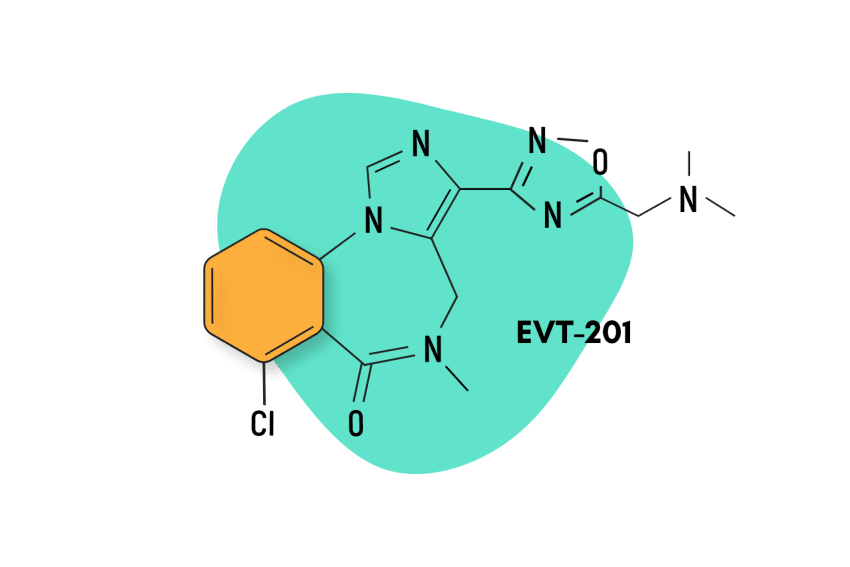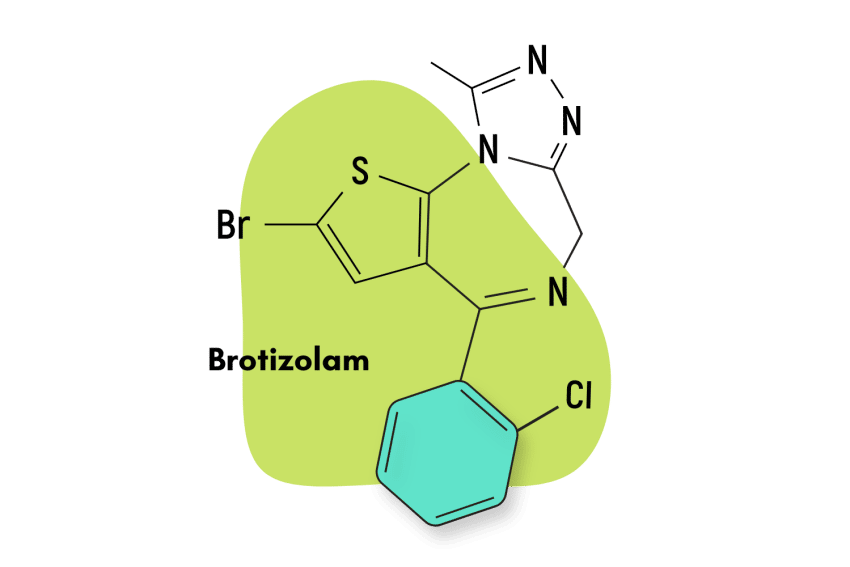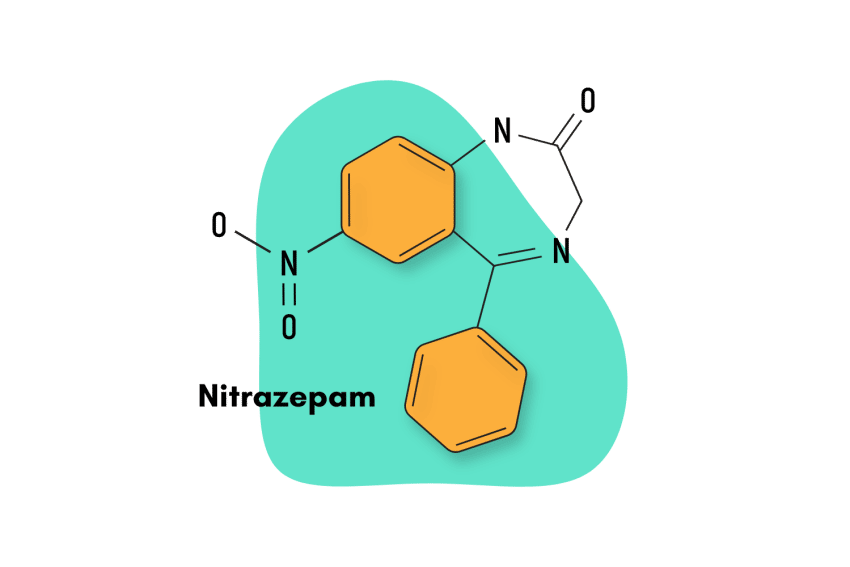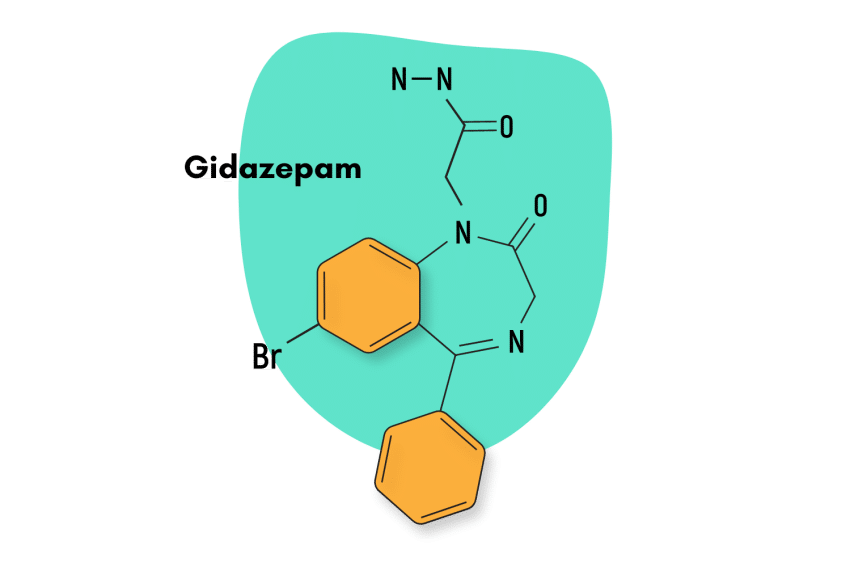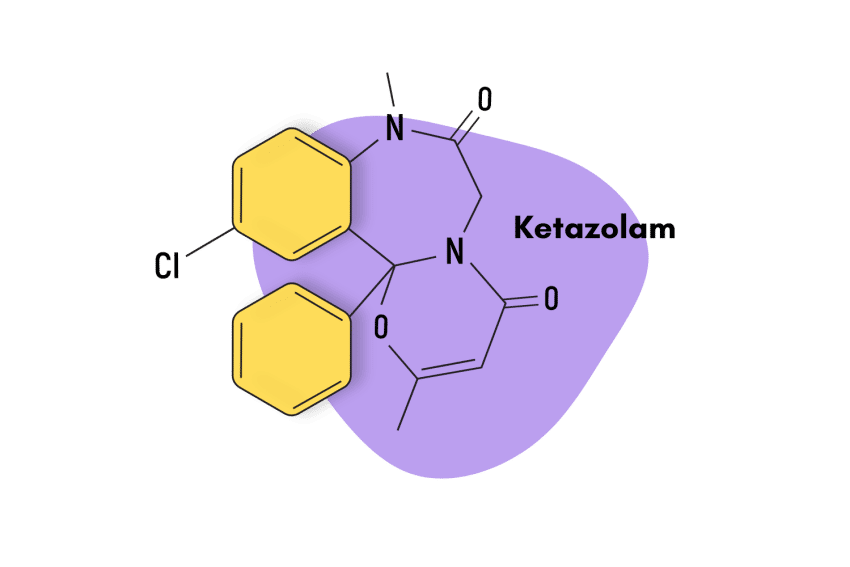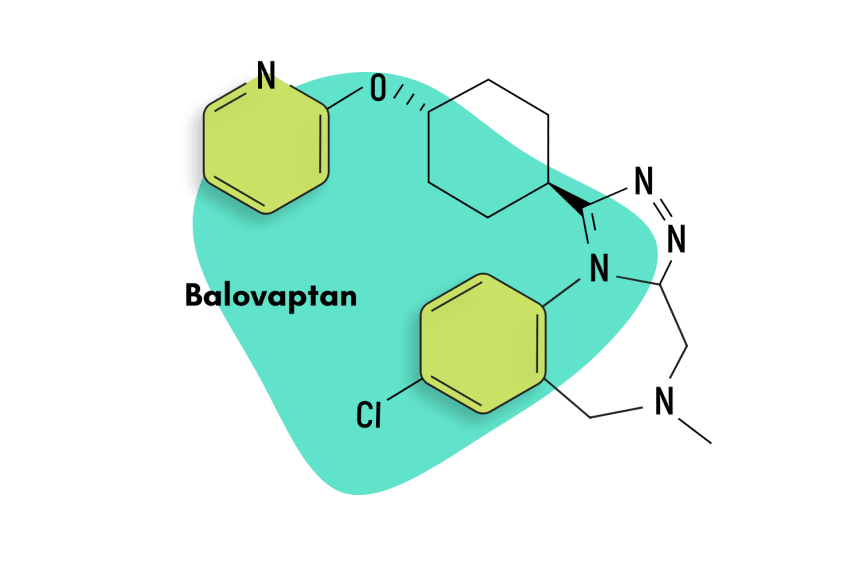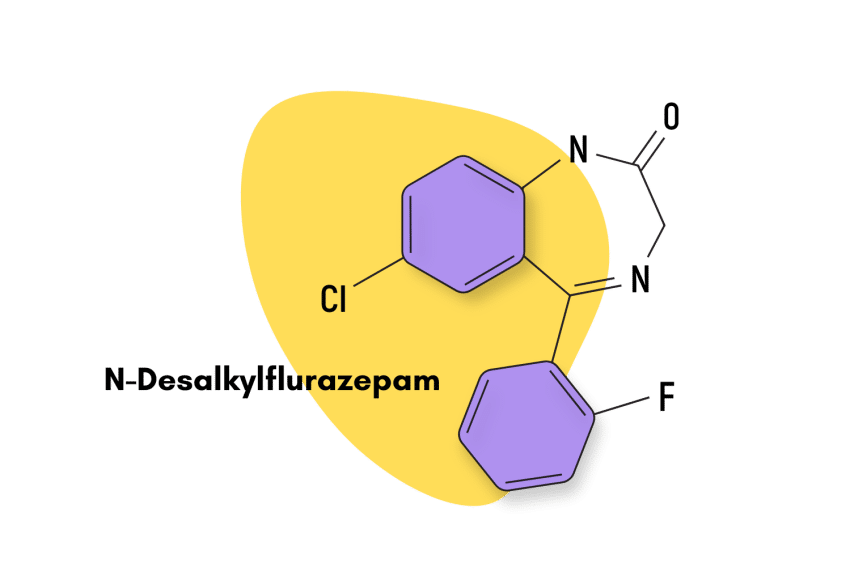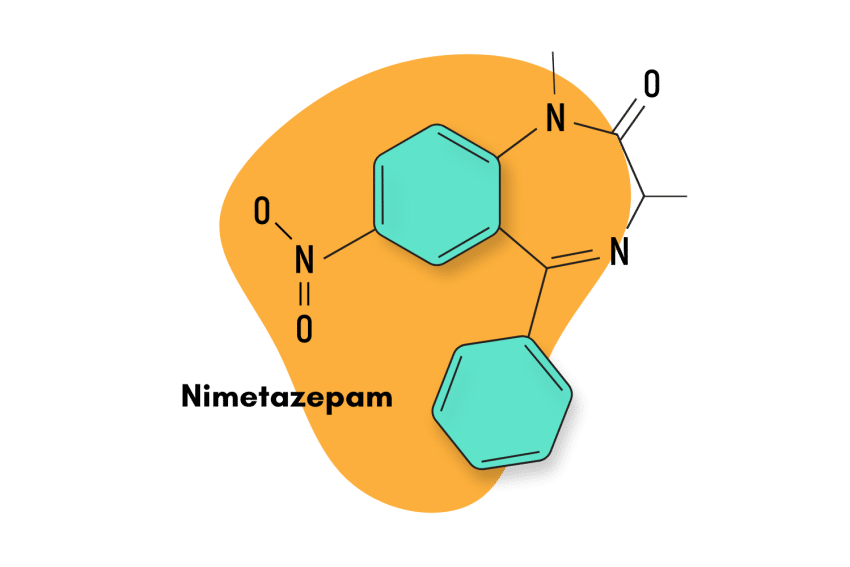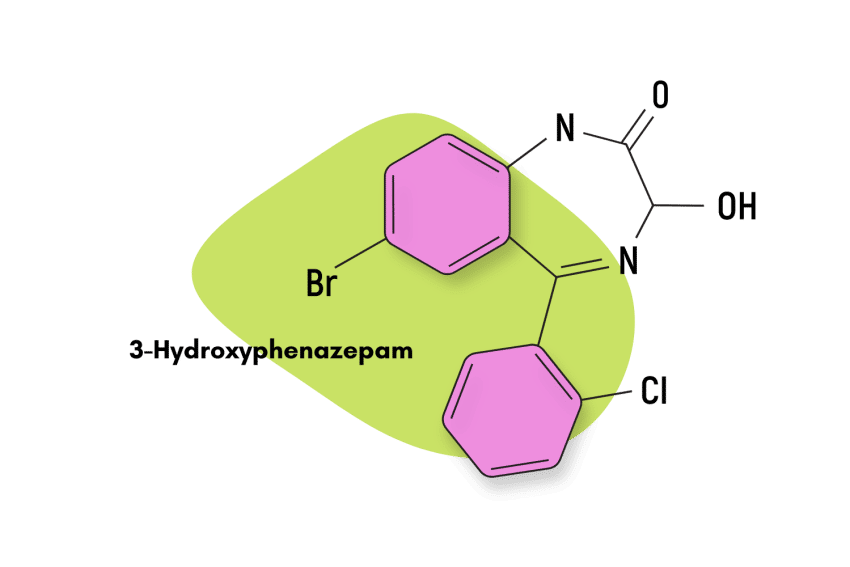Chlordiazepoxide (Librium) Fact Sheet & Harm Reduction Guide
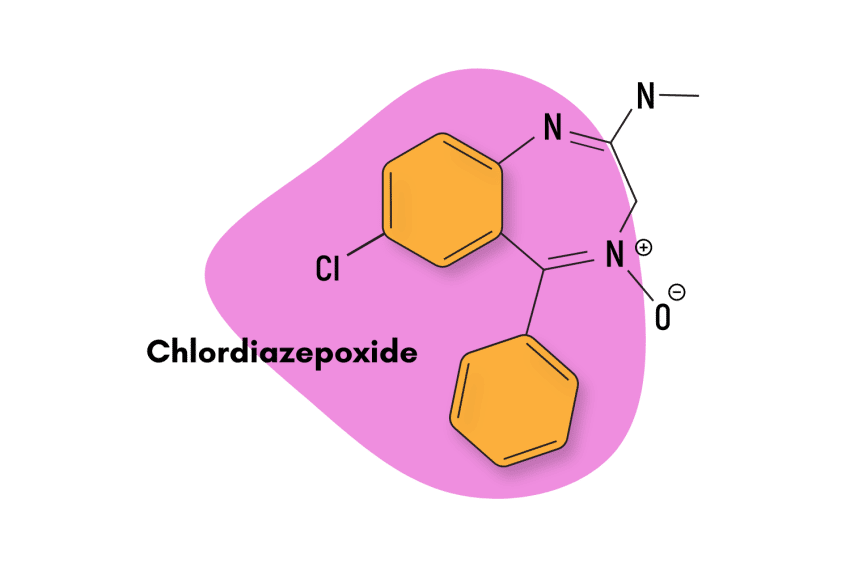
Chlordiazepoxide — commercialized under the trade name Librium — is a classical 1,4- benzodiazepine medication. It was the first benzodiazepine ever synthesized.
Chlordiazepoxide, as is typical for 1,4- benzodiazepines, is long-lasting and considered to be of relatively lower potency — around 25 mg of Librium is roughly equivalent to 10 mg of diazepam (Valium).
Chlordiazepoxide has the standard benzodiazepine-related effects but has also been noted to have appetite-stimulating properties and weak analgesic actions.
According to the FDA, chlordiazepoxide is FDA approved for the following indications:
- Management of anxiety disorders
- Short-term relief of anxiety symptoms
- Treatment of withdrawal symptoms for acute alcoholism
- Relief of preoperative apprehension and anxiety
Chlordiazepoxide Specs
| Status | Approved 💊 |
| Common Dosage | 10-20 mg |
| PubChem ID | 2712 |
| CAS# | 58-25-3 |
IUPAC Name: 7-chloro-4-hydroxy-N-methyl-5-phenyl-3H-1,4-benzodiazepin-2-imine
Other Names: Librium, Mitran, Poxi, Libritabs
Metabolism
Chlordiazepoxide is metabolized initially by N-demethylation to desmethylchlordiazepoxide, followed by deamination to demoxepam; both metabolites are unique to chlordiazepoxide. Further metabolism results in the formation of desmethyldiazepam (nordiazepam) and oxazepam — both of which are pharmacologically active on their own.
Duration of Effects
The effects of chlordiazepoxide can range from 8 to 36 hours depending on many individual factors (age, dosage, metabolic factors, duration of use, tolerance, and more).
Chlordiazepoxide is well absorbed, with peak blood levels achieved one or two hours after administration. The absorption rate is age-related and tends to be delayed in the elderly. After absorption, it is highly bound to plasma proteins.
The half-life of chlordiazepoxide is 6-30 hours.

Benzodiazepine Dosage Equivalency Calculator
**Caution:** Benzodiazepines have a narrow therapeutic window. Dose equivalents may not be accurate in higher doses.
This calculator does not substitute for clinical experience and is meant to serve only as a reference for determining oral benzodiazepine equivalence.
Please consult a medical practitioner before taking benzodiazepines.
How Does Chlordiazepoxide Work?
Pharmacologically speaking, chlordiazepoxide possesses anxiolytic (anti-anxiety), sedative, appetite-stimulating, and weak analgesic actions. Like other classical 1,4- benzodiazepines, it exerts these effects through the classical GABA-mediated pathway; it binds to benzodiazepine receptors at the GABA-A ligand-gated chloride channel complex and enhances GABA’s inhibitory effects through an allosteric effect [1].
However, researchers have also identified secondary mechanisms of action that contribute meaningfully to chlordiazepoxide’s pharmacological profile.
For instance, some of its anxiolytic benefits come through its inhibition of neuronal activity in amygdala-centered fear circuits. Additionally, chlordiazepoxide also blocks EEG arousal from stimulation of the brain stem reticular formation [2].
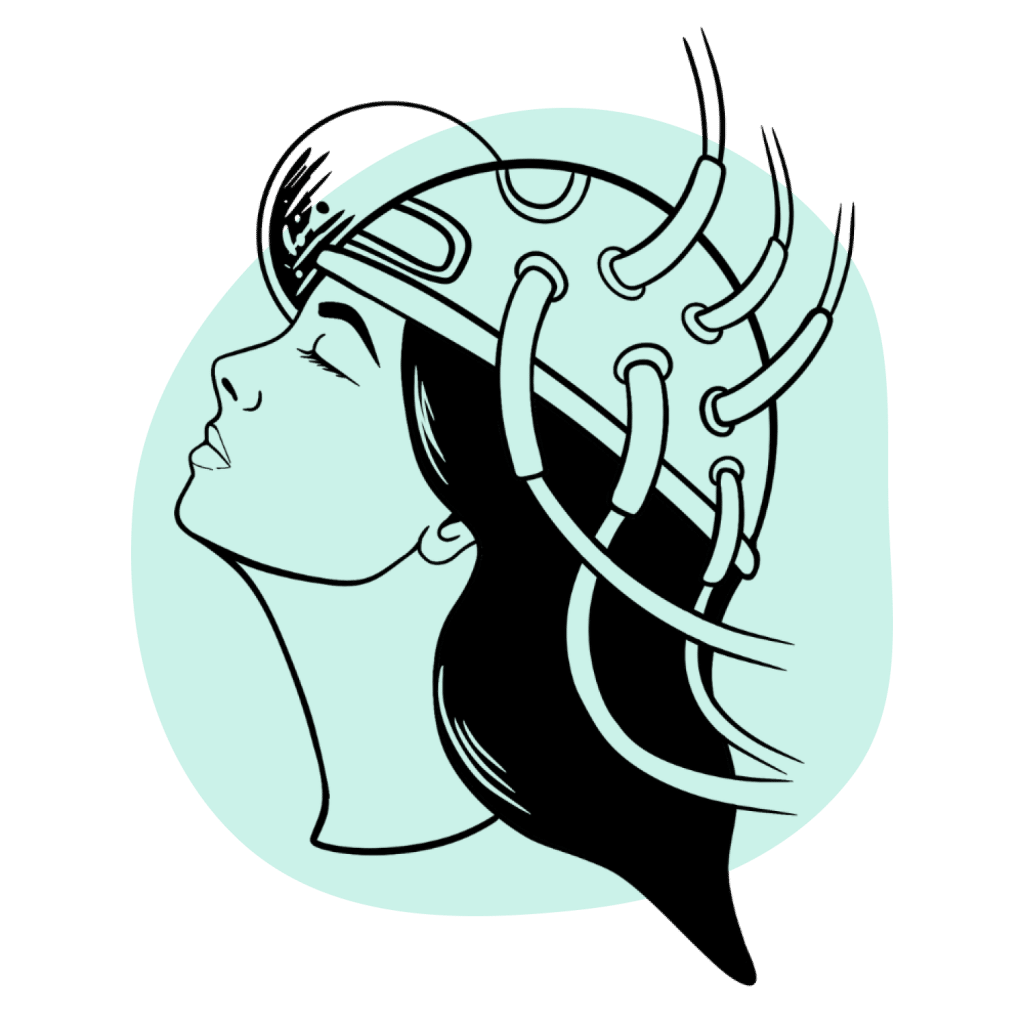
Chlordiazepoxide Pharmacokinetics
Research has demonstrated how the specific affinity each benzodiazepine has for the different sets of existing GABA-A subunits is an important determiner regarding their pharmacological profile. However, now it is also known that pharmacokinetic characteristics also have a crucial role to play. Pharmacokinetic characteristics make a difference when it comes to the clinical effectiveness of a benzodiazepine [3].
When it comes to chlordiazepoxide, the long-lasting nature of its chemical makeup and the fact that it produces a range of pharmacologically active metabolites are quite important.
Chlordiazepoxide produces four active metabolites: desmethylchlordiazepoxide, demoxepam, desmethyldiazepam, and oxazepam. These byproducts all have different elimination half-lives and pharmacological characteristics. For example, Desmethyldiazepam has an elimination half-life of roughly 36-200 hours and is considered a benzodiazepine compound in its own right.
Chlordiazepoxide’s metabolic profile means multiple-dose therapy with chlordiazepoxide results in the accumulation of the parent compound within the body and two or more of its active metabolites. The rate and extent of accumulation vary considerably between individuals [4]. This is likely why health authorities often recommend chlordiazepoxide treatment for a maximum of four weeks.
Is Chlordiazepoxide Safe? Risks & Side Effects
Chlordiazepoxide and most benzodiazepines have been classified under the Controlled Substances Act as a Schedule IV compounds. This designation means that the drug has recognized medical uses, but, at the same time, it also carries with it the potential for misuse and the danger of physical and mental dependence.
Compared to other benzodiazepines, the creation of active metabolic byproducts means that with chlordiazepoxide, there is an added risk of the compound accumulating in the body, especially in elderly patients or those with hepatic impairments [5].
It is true that when taken correctly, benzodiazepines are generally safe to use. However, once the potential for misuse is factored into the equation, the risk of starting a benzodiazepine treatment rises considerably. Users should always strive to prevent misuse, and under no circumstances should they mix their benzodiazepine prescription with other potent pharmacological compounds, especially opioids and other CNS depressants.
The recent explosion in polydrug abuse in the United States and the consequent rise in drug overdose fatalities have prompted the FDA to update the boxed warning for benzodiazepine medications.

Side Effects of Chlordiazepoxide
According to the FDA, the necessity for discontinuing therapy due to side effects is rare, but the following adverse effects have been identified with chlordiazepoxide usage:
- Ataxia
- Confusion
- Drowsiness
- Syncope
These side effects can usually be controlled by lowering the dosage, but they have also been reported at lower dosing regimens.
Other, rarer side effects may include:
- Blood dyscrasias
- Changes in EEG patterns
- Constipation
- Edema
- Extrapyramidal symptoms
- Hepatic dysfunction
- Increased/decreased libido
- Jaundice
- Minor menstrual irregularities
- Nausea
- Skin eruptions
Benzodiazepine Withdrawal & Dependence
Benzodiazepine withdrawals are a common side effect of engaging in a benzodiazepine treatment. There are, of course, meaningful differences when it comes to the wide variety of commercially available benzodiazepines, but, in general, all benzodiazepines display a considerable capacity to induce physical dependence in users, much more than their Schedule IV designation would entail.
Indeed, there is a common misconception among prescription drug users that benzodiazepines don’t have much of a chance of causing dependence when taken following a prescription.
For instance, a recent study that examined the likelihood of developing dependence in patients who took benzodiazepines for longer than four weeks found that one-third of participants developed a dependence and consequent withdrawal symptoms after completing treatment [6].
In the case of chlordiazepoxide, specifically, benzodiazepine withdrawals are less of an urgent problem upon cessation of treatment. This is because the long elimination half-life of the drug makes it so that any possible symptoms are less acute. However, the possibility of drug accumulation can also influence whether or not a dependence forms.
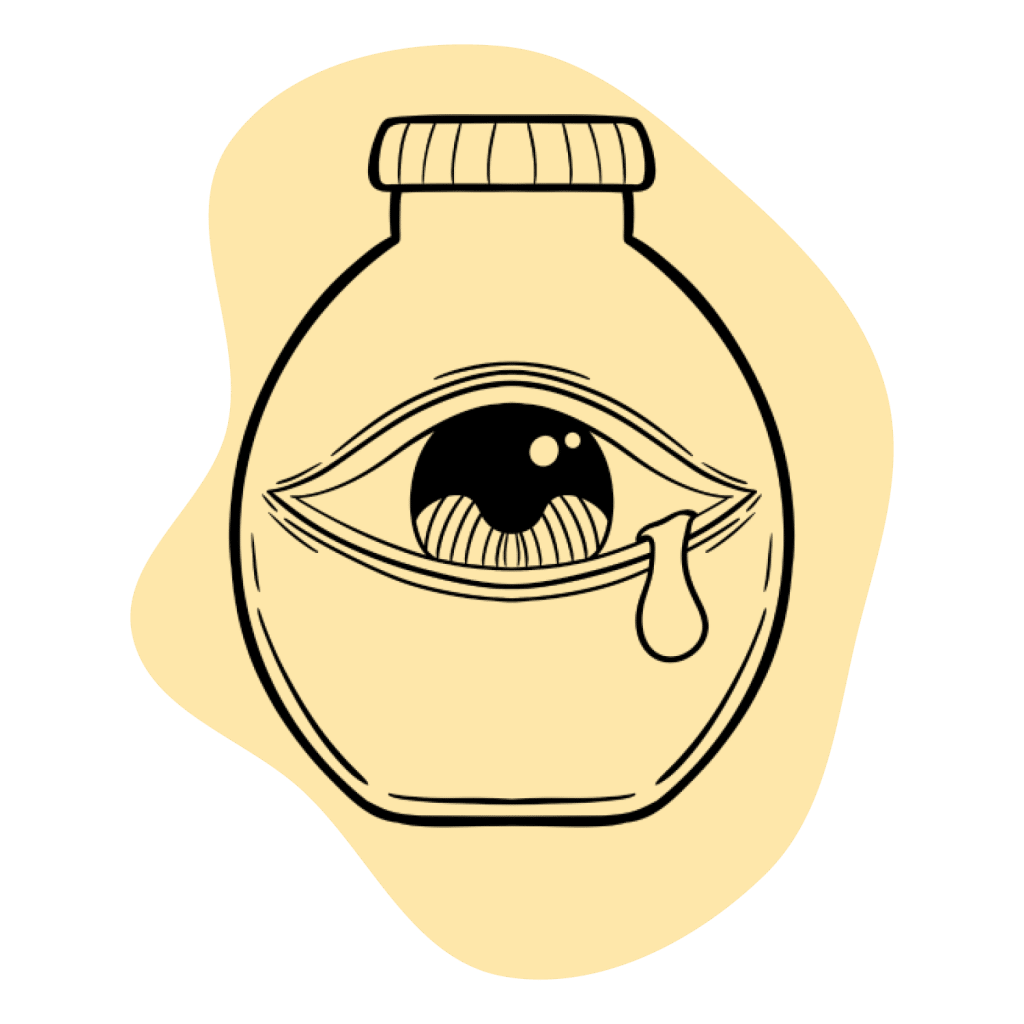
Harm Reduction: Chlordiazepoxide
When it comes to harm reduction, the most effective method users can use to stay safe is avoiding misuse. This means that before seeking out a benzodiazepine treatment, users should seriously consider their risk factors. For instance, users with a history of drug and/or alcohol abuse have been shown to have a much higher chance of abusing prescription medication. If a user falls into that category, then maybe they should consider alternative treatments like behavior-related solutions or plant-based medication.
In other words, since misuse is the biggest risk factor, users have to be honest with themselves about their capacity to handle a benzodiazepine prescription.
Apart from avoiding misuse, users should also keep in mind specific rules of thumb that will help them stay safe. For example, users should ask their doctors to try to limit their benzodiazepine prescriptions to the lowest effective dose and the shortest time frame possible. This will go a long way towards hedging against the possibility of physical dependence.
Benzodiazepine Harm Reduction Tips:
- 🥣 Don’t mix — Mixing benzodiazepines with other depressants (alcohol, GHB, phenibut, barbiturates, opiates) can be fatal.
- ⏳ Take frequent breaks or plan for a short treatment span — Benzodiazepines can form dependence quickly, so it’s important to stop using the drug periodically.
- 🥄 Always stick to the proper dose — The dosage of benzos can vary substantially. Some drugs require 20 or 30 mg; others can be fatal in doses as low as 3 mg.
- 💊 Be aware of contraindications — Benzodiazepines are significantly more dangerous in older people or those with certain medical conditions.
- 🧪 Test your drugs — If ordering benzos from unregistered vendors (online or street vendors), order a benzo test kit to ensure your pills contain what you think they do.
- 💉 Never snort or inject benzos — Not only does this provide no advantage, but it’s also extremely dangerous. Benzos should be taken orally.
- 🌧 Recognize the signs of addiction — Early warning signs are feeling like you’re not “yourself” without the drug or hiding your habits from loved ones.
- ⚖️ Understand the laws where you live — In most parts of the world, benzodiazepines are only considered legal if given a prescription by a medical doctor.
- 📞 Know where to go if you need help — Help is available for benzodiazepine addiction; you just have to ask for it. Look up “addiction hotline” for more information about where you live. (USA: 1-800-662-4357; Canada: 1-866-585-0445; UK: 0300-999-1212).
Chlordiazepoxide Drug Interactions
Combining two pharmacologically potent drugs will always increase risk levels. And when it comes to benzodiazepines, there are several drug types that users should never mix. These are alcohol, GHB, other benzodiazepines, barbiturates, and opiates. You should never mix other CNS depressants with a benzodiazepine, even if they are a natural compound like the kratom plant.
The reason for this is that when two drugs apply depressive effects to the central nervous system at the same time, it puts the user at risk of respiratory depression, the leading cause of death among drug overdoses.

Chlordiazepoxide Contraindications
Chlordiazepoxide is contraindicated for the following conditions/compounds:
- Hepatic impairments
- Known hypersensitivity to benzodiazepines
- Myasthenia gravis
- Pregnancy/lactation
- Psychiatric disorders
- Sleep apnea
Chlordiazepoxide Dosage
According to the Mayo Clinic, the recommended dosage ranges for chlordiazepoxide (oral capsules) include:
| Indication | 👧🏽 Children | 👩🏻 Adults | 👨🏽🦳 Older Adults (>65) |
| Anxiety | Determined by doctor | 5–25 mg (2–3 times/day) | 5 mg (2–4 times/day) |
| Alcohol Withdrawal | Determined by doctor | 50–100 mg | Determined by doctor |
Similar Benzodiazepines
There is a wide range of commercially available benzodiazepines, which means that if one is looking for treatment, there are usually a couple of benzodiazepine alternatives to consider.
Carburazepam
Carburazepam is a Russian-made benzodiazepine; consequently, there isn’t a lot of widely-accessible information about it. However, one of the available studies has concluded that it possesses pharmacological properties that are comparable to those of chlordiazepoxide [7].
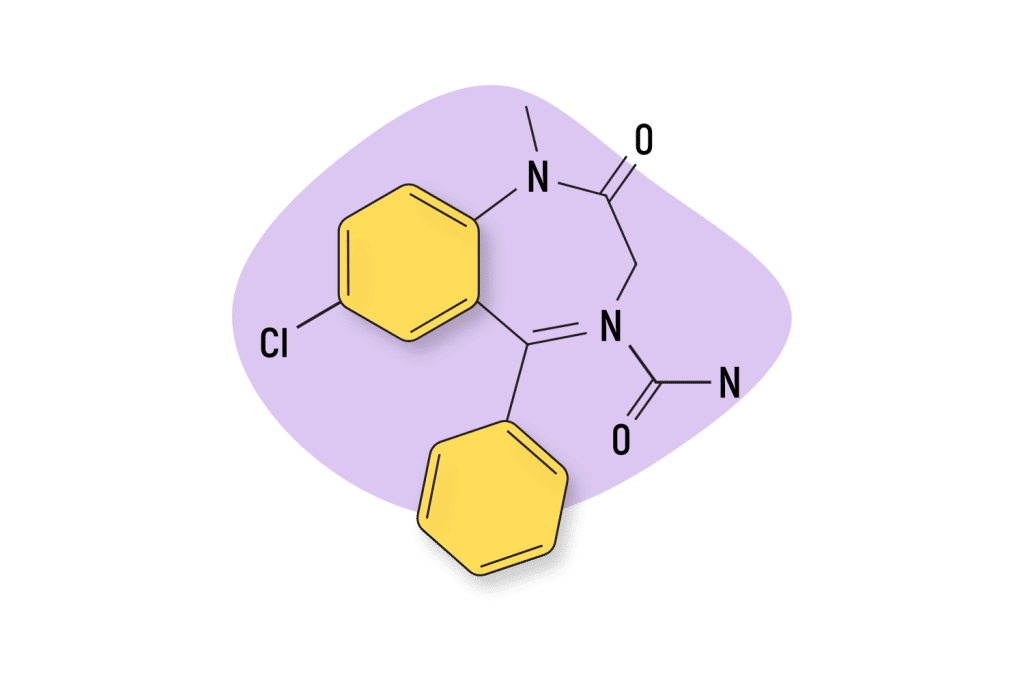
Diazepam
Diazepam is one of the most commercially successful benzodiazepines on the market. It is widely used as a benchmark for comparison when it comes to the wide range of existing benzodiazepine compounds.
As a 1,4- benzodiazepine, diazepam is closely related to chlordiazepoxide and shares many structural and pharmacological similarities with it. These can be seen in the approved indications of diazepam, which are similar to those of chlordiazepoxide. And they’re also similar when it comes to pharmacokinetics; both compounds are long-acting, although diazepam is slightly more potent than chlordiazepoxide.
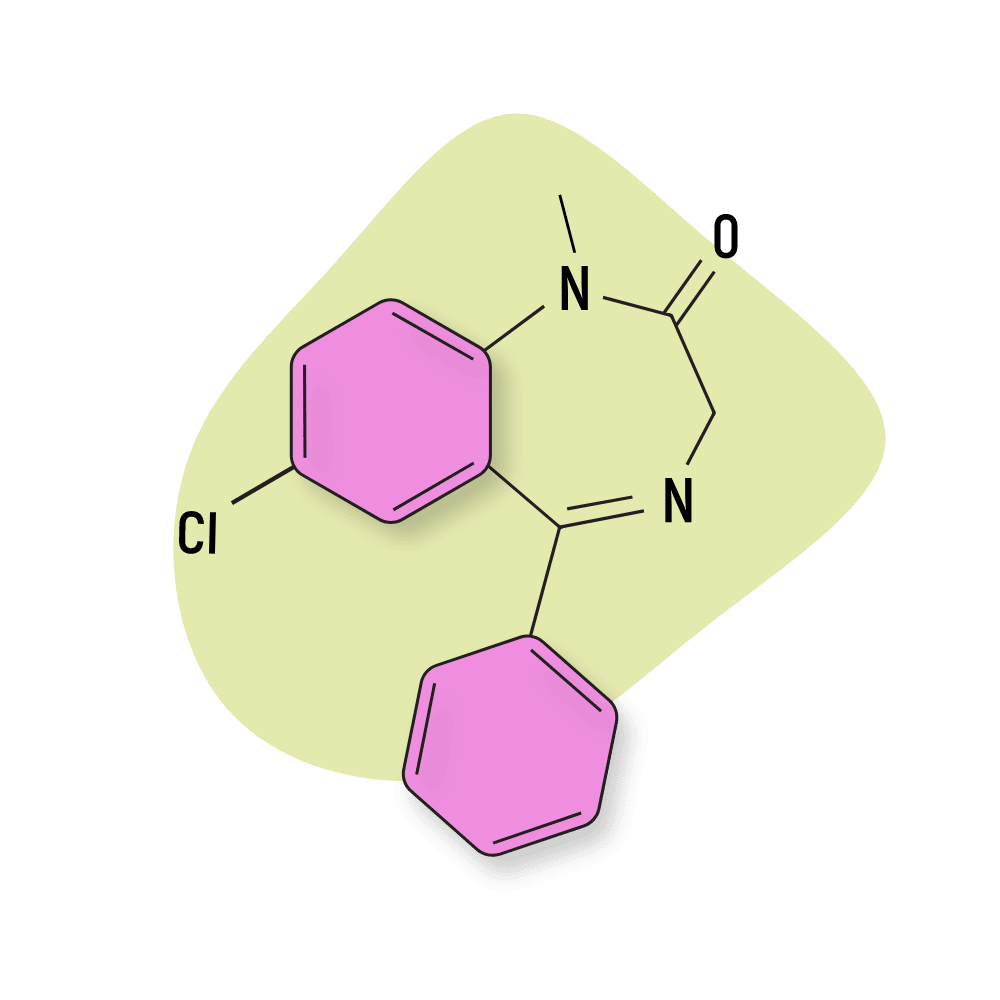
Natural Alternatives to Benzodiazepines
Users don’t necessarily need to expose themselves to the risk associated with benzodiazepines; plenty of natural alternatives exist!
Kava
The kava plant (Piper methysticum) is a tropical plant species that is a suitable alternative to benzodiazepines. This is because it contains several active ingredients, known as kavalactones, which have benzodiazepine-like effects. However, kava doesn’t share all the same effects as benzodiazepines; it can only produce anxiolytic and sedative benefits [8].

Kratom
The kratom plant is another great natural option to replace benzodiazepines, as it has a more extensive range of effects than kava. When taken in low doses, kratom offers potent stimulant and euphoric benefits; when taken in mid-to-high doses, kratom becomes an anxiolytic and sedative [9].
However, kratom does have some caveats. Even though it is much safer than pharmacological prescription drugs, kratom still has some risks. Mainly, it does have the capacity to cause physical dependence. However, very large doses are needed for this, and, as a CNS depressant, it can pose a considerable risk if mixed with opioids, benzodiazepines, or alcohol.

Chlordiazepoxide FAQs
Does chlordiazepoxide have any off-label (not approved by the FDA) indications?
Yes. Chlordiazepoxide has been used off-label as a treatment for catatonia. Also, when combined with clidinium bromide (as the approved medication Librax), it can be used to ease the symptoms of irritable bowel syndrome.
What formulations is chlordiazepoxide available in
Chlordiazepoxide is available as capsules containing either 5 mg, 10 mg, or 25 mg.
References
- Ahwazi, H. H., & Abdijadid, S. (2019). Chlordiazepoxide.
- Masiulis, S., Desai, R., Uchański, T., Serna Martin, I., Laverty, D., Karia, D., … & Aricescu, A. R. (2019). GABAA receptor signaling mechanisms revealed by structural pharmacology. Nature, 565(7740), 454-459.
- Vgontzas, A. N., Kales, A., & Bixler, E. O. (1995). Benzodiazepine side effects: role of pharmacokinetics and pharmacodynamics. Pharmacology, 51(4), 205-223.
- Greenblatt, D. J., Shader, R. I., MacLeod, S. M., & Sellers, E. M. (1978). Clinical pharmacokinetics of chlordiazepoxide. Clinical pharmacokinetics, 3(5), 381-394.
- Liu, G. G., & Christensen, D. B. (2002). The continuing challenge of inappropriate prescribing in the elderly: an update of the evidence. Journal of the American Pharmaceutical Association (1996), 42(6), 847-857.
- Riss, J., Cloyd, J., Gates, J., & Collins, S. (2008). Benzodiazepines in epilepsy: pharmacology and pharmacokinetics. Acta neurologica scandinavica, 118(2), 69-86.
- Zakusov, V. V. (1983). Pharmacology of uxepam. Farmakologiya i Toksikologiya.
- Sarris, J., Stough, C., Bousman, C. A., Wahid, Z. T., Murray, G., Teschke, R., … & Schweitzer, I. (2013). Kava in the treatment of generalized anxiety disorder: a double-blind, randomized, placebo-controlled study. Journal of clinical psychopharmacology, 33(5), 643-648.

